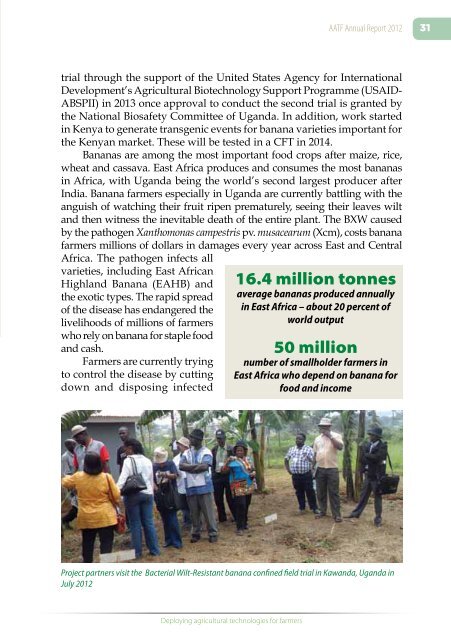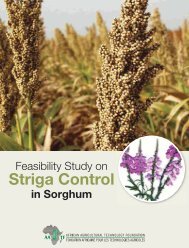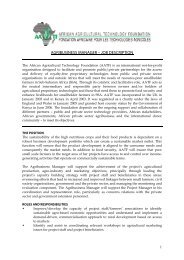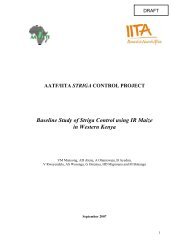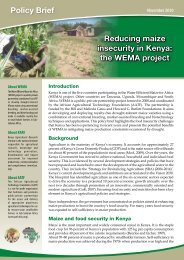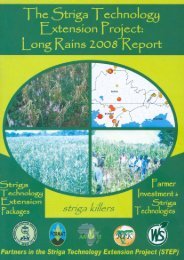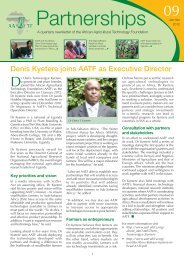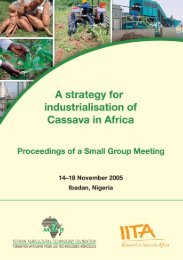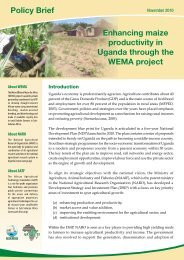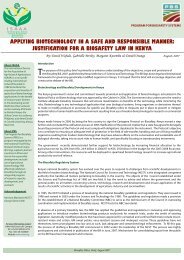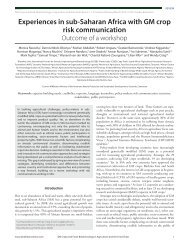Annual Report 2012 - African Agricultural Technology Foundation
Annual Report 2012 - African Agricultural Technology Foundation
Annual Report 2012 - African Agricultural Technology Foundation
You also want an ePaper? Increase the reach of your titles
YUMPU automatically turns print PDFs into web optimized ePapers that Google loves.
AATF <strong>Annual</strong> <strong>Report</strong> <strong>2012</strong><br />
31<br />
trial through the support of the United States Agency for International<br />
Development’s <strong>Agricultural</strong> Biotechnology Support Programme (USAID-<br />
ABSPII) in 2013 once approval to conduct the second trial is granted by<br />
the National Biosafety Committee of Uganda. In addition, work started<br />
in Kenya to generate transgenic events for banana varieties important for<br />
the Kenyan market. These will be tested in a CFT in 2014.<br />
Bananas are among the most important food crops after maize, rice,<br />
wheat and cassava. East Africa produces and consumes the most bananas<br />
in Africa, with Uganda being the world’s second largest producer after<br />
India. Banana farmers especially in Uganda are currently battling with the<br />
anguish of watching their fruit ripen prematurely, seeing their leaves wilt<br />
and then witness the inevitable death of the entire plant. The BXW caused<br />
by the pathogen Xanthomonas campestris pv. musacearum (Xcm), costs banana<br />
farmers millions of dollars in damages every year across East and Central<br />
Africa. The pathogen infects all<br />
varieties, including East <strong>African</strong><br />
Highland Banana (EAHB) and<br />
the exotic types. The rapid spread<br />
of the disease has endangered the<br />
livelihoods of millions of farmers<br />
who rely on banana for staple food<br />
and cash.<br />
Farmers are currently trying<br />
to control the disease by cutting<br />
down and disposing infected<br />
16.4 million tonnes<br />
average bananas produced annually<br />
in East Africa – about 20 percent of<br />
world output<br />
50 million<br />
number of smallholder farmers in<br />
East Africa who depend on banana for<br />
food and income<br />
Project partners visit the Bacterial Wilt-Resistant banana confined field trial in Kawanda, Uganda in<br />
July <strong>2012</strong><br />
Deploying agricultural technologies for farmers


